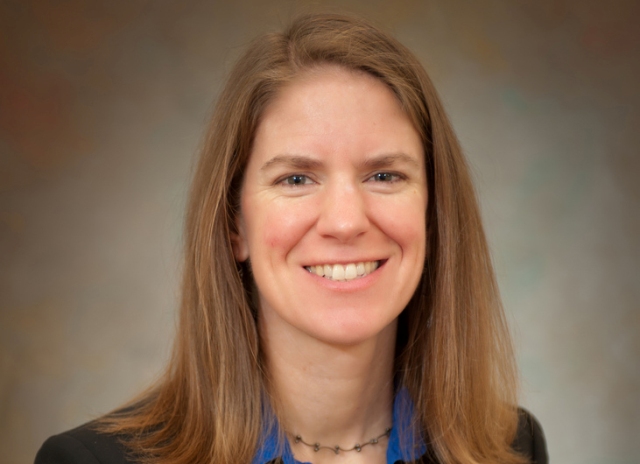Feb 5 2016
Clemson University scientist Saara DeWalt is part of a collaborative study of second-growth tropical forests in Central and South America that will be published Feb. 11 in the journal Nature. DeWalt and dozens of other scientists contributed to the paper titled “Biomass Resilience of Neotropical Secondary Forests.”
 Saara DeWalt is an associate professor in the biological sciences department at Clemson University. Image Credit: Clemson University
Saara DeWalt is an associate professor in the biological sciences department at Clemson University. Image Credit: Clemson University
Much of the world’s tropical forests are no longer “old-growth forests”— defined as forests that are at least 500 years old – but rather are “secondary forests” less than 100 years old that have naturally regenerated following forest clearance or agricultural abandonment. Past research on secondary forests has focused on how they might help to conserve plant and animal species specific to old-growth forests. But this new paper will spotlight how quickly secondary forests recover biomass and uptake carbon.
“How much biomass is being recovered in secondary forests? How big are the trees?” said DeWalt, an associate professor in the biological sciences department at Clemson University. “Does a tropical wet forest recover faster than a tropical dry forest? Does it matter whether it’s in Central America or South America? For the most part, the answer is yes. And this information provides valuable resources for future research and decision-making.”
Tropical Forests
Though deforestation continues to ravage old-growth tropical forests at an alarming rate, the relatively rapid regrowth of secondary forests appears to be offsetting some of this devastation. The paper, which examines 45 sites across Central and South America and more than 168,000 tree stems, is based on the most expansive research of its kind.
“This paper is a collaborative effort led by Dutch ecologist Lourens Poorter, who has organized researchers from across the Neotropics to look at how quickly forests grow back,” DeWalt said. “My work in secondary forests has been in Central Panama around the Barro Colorado Nature Monument. And I’ve been working with Daisy Dent at the University of Stirling in the UK and my former Ph.D. advisor, Julie Denslow.”
DeWalt and her two colleagues are among a team of scientists who have been studying forests of different ages using a method called “chronosequences.”
“Here’s a patch of land that is 20 years old, here’s one that’s 40, here’s one that’s 70 and here’s an old-growth forest that has not been disturbed for a very long time,” DeWalt said. “We use these different places on the landscape to infer what would happen over time. For instance, the 40-year-old forest is what the 20-year-old forest would look like 20 years from now. The Nature article is the result of a collection of a lot of chronosequence studies across Central and South America.”
Interestingly, the statistical analysis of the enormous data set indicates that secondary forests takes up carbon as much as 11 times faster than old-growth forests. This is because the younger forests have access to more sunlight and therefore the trees grow at a much quicker rate, while old-growth forests grow more slowly and are enormous reservoirs of carbon. Trees absorb carbon dioxide and turn carbon into sugars that they then use as food to fuel their growth and eventual ability to reproduce.
“About half of the above-ground biomass of the forest is made of carbon, so if you divide the amount of estimated biomass in a forest by two, then you get about how much carbon the forest contains,” DeWalt said. “What’s novel about this paper is that it is addressing a vast area across the tropics of Central and South America. What we’re finding is that secondary forests, especially in wetter areas, have greater value than we previously suspected. By 70 years, these forests have regained almost all their biomass.”
Included with the paper is a biomass recovery map, which policymakers can use to prioritize forests for conservation.
“Biomass Resilience of Neotropical Secondary Forests” will appear in print on Feb. 11 but is already available online.